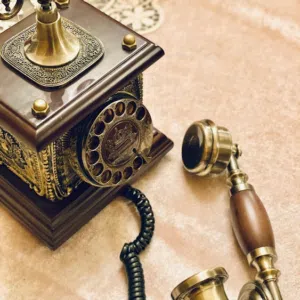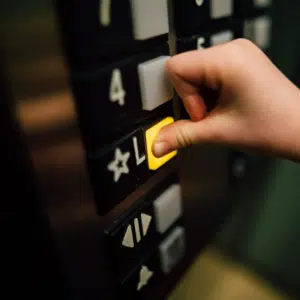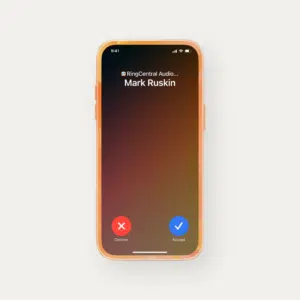




Have you used a POTS line? Do you know what one is? The chances are, you probably have used one without being aware of it. They’ve been connecting people, groups, and whole societies for years, so they’re pretty hard to avoid.
Why is it an important subject? Because, at heart, business is about connecting companies with customers. In other words, communication. POTS lines have been historically rather good at this job.
So, first, let’s ask the questions: what are POTS phone lines and how do they do what they do? And then we’ll look at another option.
What is a POTS line?
A POTS line is a Plain Old Telephone Service landline.
POTS is what’s been doing the job of linking everyone together since the 1870s when inventor Alexander Graham Bell demonstrated electromagnetic telephony for the first time.
By building on the prior work of a number of inventors, Bell was able to produce a revolutionary system that brought individuals, then towns, then countries, and eventually the whole world together. Great work, Mr Bell. Not bad for a fella whose first invention was a grain dehusking device.
How do POTS lines work?
The main thing to understand about a POTS landline is that it depends on a physical connection. A truly massive network of copper lines carries signals, ultimately, from one handset to another.
How is a POTS line connected? Let’s take a more granular look at the process involved:
- The caller dials a number, which is translated into electrical signals and transmitted down a cable to a receiving terminal.
- The signals then go via an aerial cable to a phone company unit, within which automated procedures direct the call in the right direction. This might be to a central office or a tandem office, depending on how the company is set up and where the destination number might be located.
- Once the signals get to the relevant office, they are directed to a terminal for further assessment.
- At this point, the appropriate local line is selected, and the intended recipient’s handset is alerted. This is how calls get routed.
- Once the connection is established, the caller can commence communication by speaking into their handset. The soundwaves thus produced are converted into electrical signals.
- The signals motor their way from one handset to the other, via the connection that’s been set up as above. When they get to the receiving unit, they are converted back into soundwaves, in other words, words!
Sounds pretty complicated, right? Well, it is. And it gets even more so when we start looking at international calls, which might involve transfers through a series of central offices. No wonder voices can often sound a little grainy with a long-distance POTS call.
A key consideration with a POTS line is that we are dealing with an analog representation of a voice. Unlike the digital approach, there is no conversion to data here. It’s a straight transfer of soundwave to electrical signal, both of which forms are subject to interference and degradation over distance.
Given this, it’s kind of amazing that it works as well as it does.
What are POTS lines used for?
So, they’ve been around for a while. But are they still a thing? Absolutely. Although their use is becoming less widespread and often tends to be for certain quite specific circumstances.
Examples include legacy systems such as some old business phone service examples, security panels, elevator service communications, and fire alarms.
Here’s the thing with POTS lines; there’s nowhere for them to go, evolutionally speaking. They’ve been terrific, but technology has moved on.
We’ll see shortly what other possibilities there are out there. Possibilities that a forward-thinking business will need to be exploring if they want to be equipped for the future.
How to check if you have a POTS telephone line
There are a number of factors that can point to your having a POTS telephone service. For instance, take a look at any connecting cord. If it’s an Ethernet cable, the chances are it’s not POTS. If it’s a traditional phone cord, then it could well be POTS.
Also look to see if there’s an ATA (Analog Telephone Adaptor) box connected anywhere. These adapt analog units to digital systems, so if there’s one there, then the chances are you have a digital phone line. If not, then you may have a POTS line.
Who provides the service? If it’s a cable or data company then the chances are high that you have a VoIP phone—that’s Voice over Internet Protocol, and there’ll be more on that in just a little bit. A conventional phone company will more likely provide a POTS service.
Or, to get an inarguable take on the situation, you can just call your provider.
Pros and cons of POTS lines
So, as we’ve mentioned, specific circumstances can dictate that a POTS telephone line continues to be used. For instance, where internet coverage is poor, POTS lines can be a reliable means of maintaining communication levels, as they don’t rely on internet connection for a call to be successfully made.
Similarly, a POTS line can be a handy thing to have if you have sporadic power supply issues. That’s because those copper lines don’t just deliver communications signals. They also provide the tiny amount of power that a POTS line and handset needs to work. So, you have a power supply that’s separate from the grid.
However, as we said above, POTS has pretty much reached the end of the road, developmentally speaking. There’s nowhere else for them to go. This means that they will not provide any more features than they do already. This makes them a good deal less practical for businesses with developing sets of needs.
There’s another big issue to bear in mind, too. In various parts of the world, POTS is being phased out. It’s been found that maintaining these old copper networks consumes too much time and materials to make the process sustainable. The FCC is also no longer requiring carriers to support POTS lines.
This has increasingly become the case in light of other, better alternatives, such as an IP phone system.
POTS vs. VoIP phone systems
Let’s start with a brief outline of the relative qualities of the two systems:
| POTS | VoIP | |
| Scalability | Limited—depends on physical network | Unconstrained |
| Mobility | Tied to physical system | Virtual system, so full mobility |
| Cost | Can be relatively expensive | Comparatively cheap |
| Reliability | Solidly reliable, although wires can be vulnerable | Needs good internet |
| Features | Extremely limited | Vast range |
| Security | Very secure against cyberattacks | Can be vulnerable to cyberattacks (but constant improvements) |
| Call quality | Good with short-distance; questionable over long-distance | With good internet, excellent quality |
| Integration | Limited compatibility with digital systems | Simple compatibility with digital systems |
Scalability
Any business considering next steps and growth plans has to also be thinking about its business phone system and its ability to cater to a change in need. This is where VoIP (Voice over Internet Protocol) displays a significant advantage, in that it can morph to suit a gamut of different demands.
This can be in terms of increased use across the whole operation, which POTS can struggle to deliver because of an inbuilt bandwidth limitation when it comes to old-school copper cabling.
Mobility
The ability to take your communications system wherever employees are, whether they’re in a distant land or just out on the road is a key concern for any successful business.
A POTS line is a fully physical entity, so if there’s not one near where your employee is, then there’s not going to be a service. On the other hand, a VoIP system is available to all your remote employees on their mobile devices. In fact, virtually anywhere they can get internet, they can connect to a VoIP-based business phone service.
Cost
Here’s an interesting point aboutVoIP vs landline. You might think that the older landline technology would be less expensive than VoIP, since it’s been around longer. However, that’s not always true.
In fact, with VoIP, you can often find deals that include free calls, either during specific times or always. Additionally, maintaining the traditional copper wire networks for landlines is becoming more and more expensive.
Reliability
POTS lines have a name for reliability; however they aren’t invulnerable to breakdowns. Their biggest weakness is an utter dependence on specific physical parts. If there’s damage to a particular copper cable, because of environmental or other factors, then this can stop calls going through.
The successful use of VoIP in business depends on good internet, so if there’s a problem with the data connection then VoIP will suffer. However, unlike POTS, you can replace one mode of connectivity with another (for example, if Wi-fi goes down, you can roll out the Ethernet cables or switch to mobile internet), which can get the show back on the road.
Features
A VoIP system like RingCentral RingEX can offer a vast range of features, from straightforward calls to auto attendants and IVR.
What’s more, solutions like RingEX are more than just phone systems. They’re unified communications platforms that bring together other channels like video conferencing, SMS, instant messaging, and more, across a huge variety of devices. Thus, keeping everybody connected no matter where they are and what they’re using.
POTS can give you calls, some call management features, and faxes, and that’s often pretty much it.
Security
There are no digital attack vectors in a POTS line meaning it has robust security against cyberattacks. VoIP is all about the digital, so in theory it is vulnerable to unauthorized access just like any other digital system.
However, the most trusted and reliable VoIP providers implement a wide range of cybersecurity measures to mitigate these threats. Work with the right provider, and you can be assured your data and calls are safe.
Call quality
POTS demonstrates good quality over short-distance but can deteriorate with longer-range calls as the analog signal becomes affected by interference and degradation.
As long as the internet signal is good and you’re with the right provider, VoIP can offer crystal-clear HD call quality, making for better communication and fewer misunderstandings.
Integration
VoIP systems like RingEX are made with integration in mind. You can have your digital systems working alongside and talking to each other pretty much straight away. Any issues can be dealt with remotely by technical experts on hand to remedy matters. Training can also be delivered in this way.
POTS systems need adaptive devices to be able to integrate at all with digital systems, and the level of interactivity is always going to be limited in scope.
Explore your POTS line replacement options to futureproof your business communications
POTS line systems have kept us talking for decades, but things are changing. We’re now at the stage where a business that wants a fully integrated service capable of handling a full range of communication methods will need to look at VoIP.
RingCentral RingEX is the kind of system we’re talking about. It’s a truly unified communications solution that gives team members full control of incoming and outgoing communication, no matter where they are and what format they’re using. It delivers scalability and flexibility so your business can shake off those copper shackles, develop, and grow.
Get future-proofed. Find out more about RingEX today.
POTS line FAQs
What is POTS in telecommunications?
What is a POTS phone line? The POTS line definition is as follows. POTS stands for Plain Old Telephone Service and is an analog facility based on a physical network of copper wires.
What is an example of a POTS line?
What are POTS lines used for? They’re still in existence in legacy systems, including elevator service lines and fire alarms. They’re also still in use in some businesses, but they’re becoming less popular.
Can you still get a POTS line?
You can certainly still get a telephone POTS line, but there are all kinds of reasons to think again. POTS cannot deliver the range of features that VoIP does, and the POTS phone service is being discontinued across some territories.
Can you use the same phone for POTS line and VoIP calls?
By using an ATA (Analog Telephone Adaptor) you can connect an existing analog POTS phone to your VoIP system. This is worth bearing in mind when you’re trying to work out the costs of new systems and ways to ease their introduction.
How much do POTS lines cost?
A lot of material goes into a POTS phone line meaning more installation and maintenance costs—plus, specialist labor can be involved in repairs. This is because a POTS landline phone service is based on a huge network of copper wiring. Calls can be expensive, too, especially when compared to VoIP charges.
Originally published Dec 09, 2024
Source link





No Comment! Be the first one.